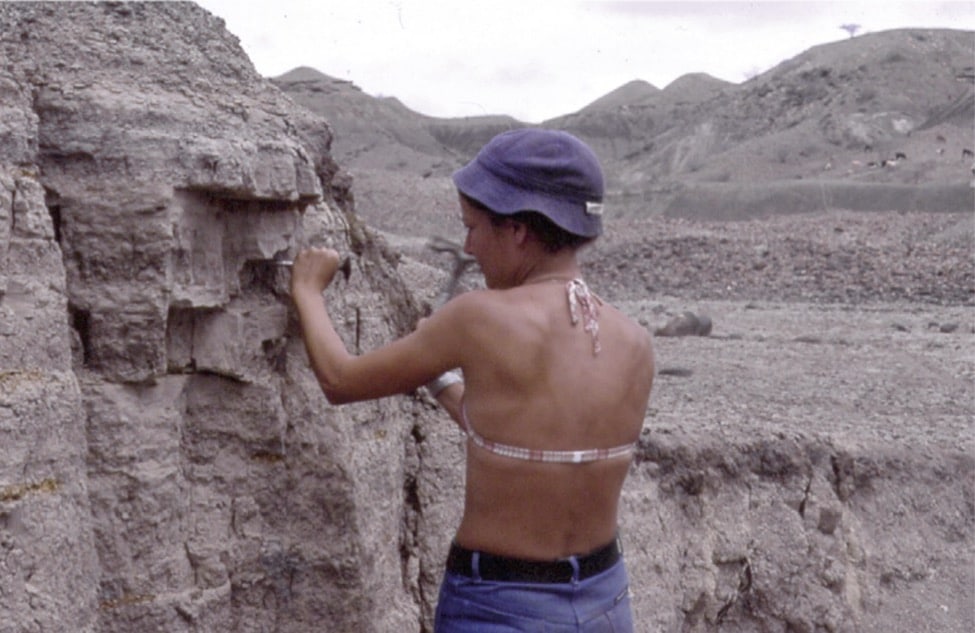It was with great sadness that we learned of the death of Annie Vincens in Aix-en-Provence on 27 June 2024.
Annie Vincens was born in 1950 in Sanga Sanga, Indonesia. She worked as a researcher at the CNRS, first at the Laboratoire de Géologie du Quaternaire (LGQ) in Meudon-Bellevue from 1976, then in Marseille where she was appointed in 1984, and finally at the CEREGE in Aix-en-Provence.
Annie specialised in the study of environmental and climatic change in tropical Africa. At the start of her career, she became interested in the environment of the first humans, particularly in Kenya during the Pleistocene, on the initiative of R. Bonnefille, as part of international missions coordinated by G. Isaac and R.E.F. Leakey. Annie defended her doctoral thesis at the University of Aix-Marseille in 1982, entitled "Palynology, present-day and Plio-Pleistocene environments to the east of Lake Turkana (Kenya)". Before that, in 1977, she took part in palynological studies at the Lucy site in Ethiopia, as part of the International Afar Research Expedition led by Maurice Taieb.
Annie has been responsible for an impressive number of analyses of surface palynological samples in Kenya and Tanzania, and has taken part in work on the calibration between pollen rain, vegetation and climate, and in particular on modelling vegetation and climate through 'biomisation'. Annie has continued her work by analysing a number of more recent sites in East Africa (lakes Magadi, Natron, Rukwa and more recently Lake Masoko, an exceptional palynological series covering the last 40,000 years in Tanzania). Annie has also extended her expertise to the Congo Basin, where she took part in the ECOFIT programme, set up by M. Servant of ORSTOM (now IRD).
Finally, his exceptional expertise in pollen morphology and botany, as well as the rigour of his analyses, have made a major contribution to the African Pollen Data Bank (APD), in which she participated from the outset, and where she was responsible for standardising pollen nomenclature after verifying determinations using the reference collection of palynological slides at CEREGE and MNHN. Annie has trained many students, particularly from Africa, in palynology.
Annie's work will be remembered for the quality of the palynological analyses carried out, particularly on numerous boreholes in African lakes, data and articles whose scientific interest will remain for a long time to come.
Before retiring, Annie left all her data, carefully labelled, filed and classified. She did the same with the reference pollen collection, for which she reviewed all the slides and updated a file that not only gives the preservation status of each slide, but also updates the name of each specimen. This enormous amount of work is a testament to her dedication to the community and her relentless rigour.
Annie was passionate about botany. She published a booklet ("Le Plateau du Petit Arbois, Guide et détermination de 184 plantes par la couleur des fleurs"), illustrated with magnificent photos, listing the plant species of the Arbois plateau, near Aix-en-Provence, which she walked for years in search of ceps, chanterelles, bolets and even morels. For she was also an expert mycologist.
With a strong, uncompromising personality and undeniable intellectual honesty, Annie also wielded a caustic sense of humour that surprised and charmed at the same time. All those who worked with her had to get used to her verve of expression, which resonated throughout the LGQ and CEREGE premises. We all regretted her retirement, which deprived us of the jubilation of still hearing her speak her frank truths about Science, Research and Life...
We will remember his sincere and constant friendship.


